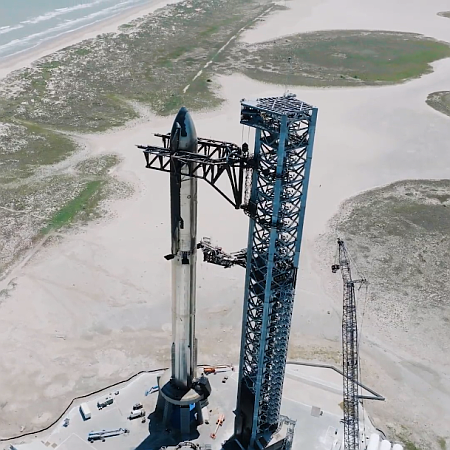German space plane company completes test program of prototype
The German space plane company Polaris Spaceplanes had now completed a 15-flight test program of the small prototype of its planned orbital and suborbital spaceplane.
The test-flights took place over the course of three days, between Aug. 22 and Sep. 8, and were meant to demonstrate the vehicle’s aerodynamics and flight control systems in preparation for a larger-scale spaceplane prototype the company plans to equip with a linear aerospike rocket engine.
MIRA-Light measures just 8.2 feet (2.5 meters) long, and flies using four electric fans. For 10 of MIRA-Light’s 15 flights, the mini-spaceplane was equipped with a mock aerospike engine to simulate its impact on vehicle performance. In total, the prototype accumulated about 40 total minutes of flight time, according to a report from European Spaceflight.
What makes this project interesting is its use of an aerospike engine, a rocket-engine concept that has been around for decades but never successfully implemented. If successful here, it will make the engines of Polaris’ spaceplane very efficient.
The company now plans a series of test programs using prototypes of increasing size, leading to flying its full-scale hypersonic space plane Aurora on commercial suborbital and orbital flights in ’26 or ’27.
The German space plane company Polaris Spaceplanes had now completed a 15-flight test program of the small prototype of its planned orbital and suborbital spaceplane.
The test-flights took place over the course of three days, between Aug. 22 and Sep. 8, and were meant to demonstrate the vehicle’s aerodynamics and flight control systems in preparation for a larger-scale spaceplane prototype the company plans to equip with a linear aerospike rocket engine.
MIRA-Light measures just 8.2 feet (2.5 meters) long, and flies using four electric fans. For 10 of MIRA-Light’s 15 flights, the mini-spaceplane was equipped with a mock aerospike engine to simulate its impact on vehicle performance. In total, the prototype accumulated about 40 total minutes of flight time, according to a report from European Spaceflight.
What makes this project interesting is its use of an aerospike engine, a rocket-engine concept that has been around for decades but never successfully implemented. If successful here, it will make the engines of Polaris’ spaceplane very efficient.
The company now plans a series of test programs using prototypes of increasing size, leading to flying its full-scale hypersonic space plane Aurora on commercial suborbital and orbital flights in ’26 or ’27.





